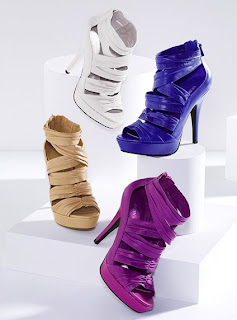
What do you associate with the word Afghanistan?
Many probably will picture of wars, terrorists, the Taliban and Osama Bin Laden.
I presume that to the eyes of many, Afghanistan is unfortunately not famous for some of its delightful traditions.
In parallel with each country, it has its own cultural beauty and legacy.
Surely, Afghanistan has been known for its struggles due to constant wars and a negative portray as a home for terrorists.
Despite the dark image of its reputation, Afghanistan's traditions like women's costumes are colorful!
( The picture shown above is Girls in traditional clothes for the fashion competition hosted by a private television channel in the city of Mazar-I-Shariff, north of Kabul.)
They are made with such a beautiful complexion. Because of embroideries on clothes and gorgeous motif, it reminds me of Saree, Indian clothing, in some ways.
In short, Afghan clothes reflect ethnic, social, cultural, geopolitical and historical diversity. It also illustrates the intersection of the connection to Arabs, Persian, Turkish and Asians.
 |
| Burqa |
Perhaps the most famous clothing for women is
Burqa: an outerwear that covers entire body from head to toe with blue in color.
Under the Taliban regime, women were required to wear Burqa. Even after the Taliban was overthrown, some women stayed on Burqa by choice.
Similar to
Hijab, Burqa is considered a figure of Islamic faith and modesty.

Traditional Afghan clothes vary in ethnicity and regions.
Unlike Burqua, Afghans' other traditonal clothes are multicolored.
Salwar kameez is one of many dresses worn by both men and women. It is made mostly from either silk or cotton. As I mentioned earlier, it comes in variation of colors like red, pink and green.
Salwar kameez is also popular in India, Pakistan, and Bangladesh. It was first introduced to India by Muslims spreading throughout neighboring countries such as Pakistan and Bangladesh. In Pakistan, it is considered as a national dress. In India, Sari stemmed from Salwar kameez. No wonder it's resembling!
Salwar is loose flowing pants reaching down to the ankle whereas Kameez is a long tunic top with slit-like openings at the shoulders. Women finish off this style by putting Dupatta, long scarf-like cloth, across the shoulders. Dupatta represents a symbol of modesty because it covers the head.

According to the website
Zarinas.com., there is more than a dozen of different dresses for special occasions. The beauty of those dresses is beyond words.
Nastaran, for example, is made in every color of the rainbow with bright pink pants and head scarf that are ornamented with embroidery of beads and silver.
Palwasha is turquoise in color including pants and head scarf. Brilliant embroidery seems to be common in those dresses.
Besides their traditional clothing, Afghanistan consists a unique culture of different ethnicity intermingled.
Unfortunately, cultural and social tradition of Afghans have been overshadowed by invasions and wars. Having said that, I hope this was for all of us to recognize the precious part of their culture we hardly see in the current media.
For more:
Afghan beauty emerges from beneath the burqa
Diverse Hamilton
Nastaran
Palwasha
 Ever since I went to Saudi Night at Oregon State University last spring, I've been in love with henna. I got to know that henna is also a cultural art in India, where my father is from.
Ever since I went to Saudi Night at Oregon State University last spring, I've been in love with henna. I got to know that henna is also a cultural art in India, where my father is from. 







































